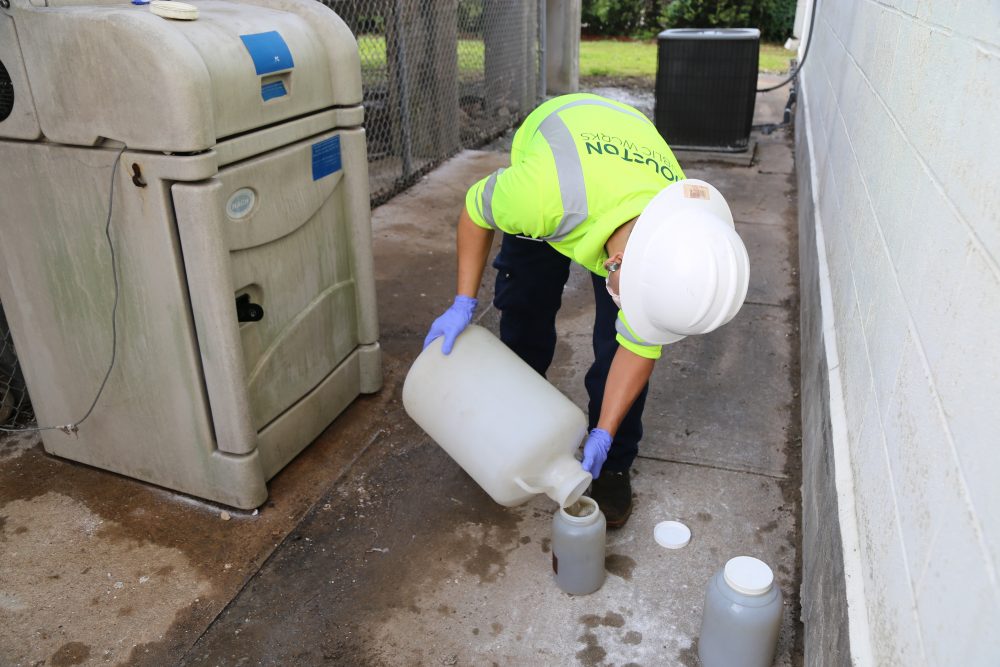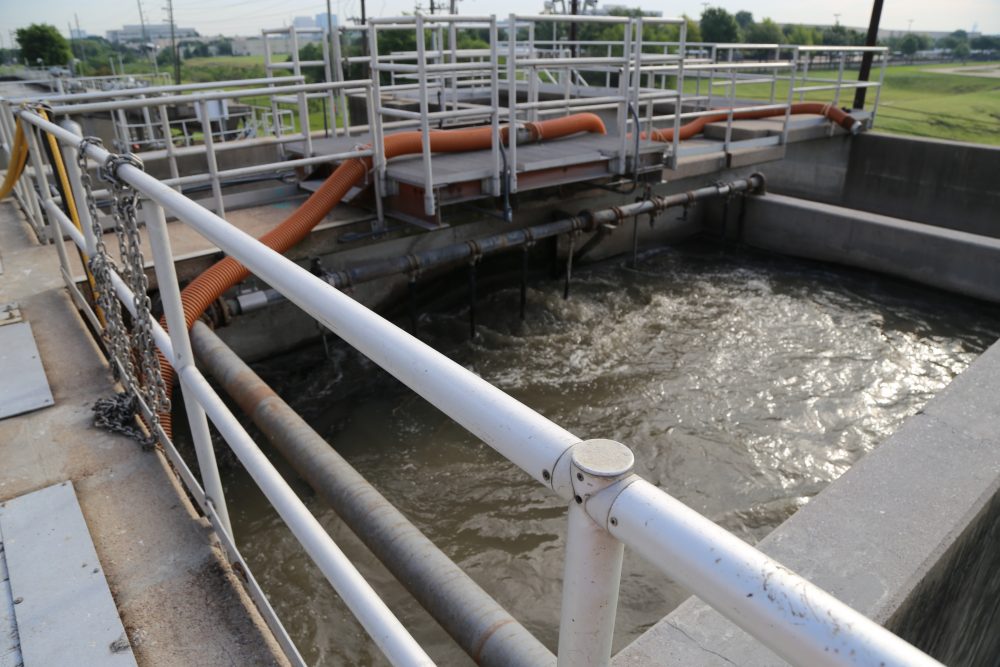As COVID-19 cases climb and test results lag behind, health officials in Houston are turning to an unlikely source to track the spread of the virus — the city’s sewage system.
The Houston Health Department is working with researchers from Rice University and Baylor College of Medicine to test the city’s wastewater for coronavirus and identify potential hotspots. Houston is one of several cities across the country turning to wastewater for answers about the virus and its spread.
“Infected people, both asymptomatic and symptomatic people, shed virus in their stool,” said Lauren Stadler, an associate professor of civil and environmental engineering at Rice. “That ends up in the sewer network where it’s then transported through our collection systems to our wastewater treatment plants.”
Stadler said samples are taken at each plant in Houston before the water has been treated.
“We can determine the concentration of the virus in that wastewater sample,” she said. “The idea is that that would be reflective of the number of infected people that are served by that wastewater treatment plant.”
While most major metropolitan areas have just a handful of wastewater treatment plants, Houston has 39. Loren Hopkins, the chief environmental science officer for the Health department, said this gives Houston a unique advantage when it comes to testing wastewater for COVID-19 because each plant provides a snapshot of a certain segment of the population.
“If we sample each one of those, we can see 39 different measures of the virus load across the city,” she said. “That information can tell us where the virus load is higher or lower.”
The goal is to track how virus concentration levels change over time to see where cases are increasing or decreasing. Hopkins said wastewater testing can complement clinical data in several critical ways.
“If we can use it in neighborhoods where we can’t get people to come out and get tested we can still understand what’s happening in that neighborhood,” said Hopkins. “If we can use that to get an idea about what part of the population is asymptomatic but still shedding the virus, that’s also very helpful.”
Hopkins said testing wastewater would never replace clinical data, but when paired together, they’re a powerful tool. The researchers began testing Houston’s wastewater back in March and fine-tuning their method. Hopkins said about a month ago they started integrating the wastewater data into the health department’s decision making.
“We use the combination of the clinical data and that trend in magnitude of the virus in the wastewater to rank the zip codes across Houston and look at clusters,” Hopkins said.
That then guides where the health department sends extra resources, like mobile testing units.

A plant worker from the Public Works department takes a sample of wastewater to test for the coronavirus. Courtesy of Houston Public Works
As the team continues to hone their technique, wastewater data could potentially play a bigger role. For example, Hopkins said they hope to be able to zero in on even more specific areas by using lift stations or manholes to collect samples.
“Once we have our method down, and we’re really able to see the virus at a small detection limit, then we can use the samples from a manhole, which gives us access to that wastewater from an individual facility,” she said.
Hopkins said this could then be used to monitor congregate living areas with high-risk populations, such as jails, nursing homes or dormitories.
Even beyond the pandemic, wastewater epidemiology may play a bigger role in public health in Houston.
“There’s a lot of viruses, bacteria, other disease-causing agents that are shed in your stool. And, wastewater-based monitoring really is a powerful tool for capturing the entire community that is served by the plant,” said Stadler, from Rice.
Stadler said other researchers have used it to identify areas with high opioid use or flu outbreaks.
“The whole idea of it is that if you can identify specific areas that are having burdens of drug use or disease, you can allocate resources appropriately,” she said.
For now, the team is taking wastewater samples twice a week, and continuing to refine their method.















